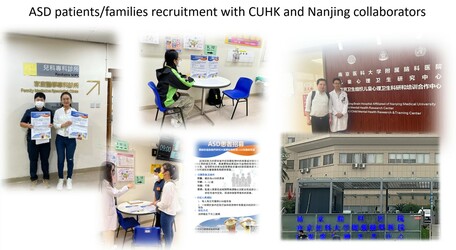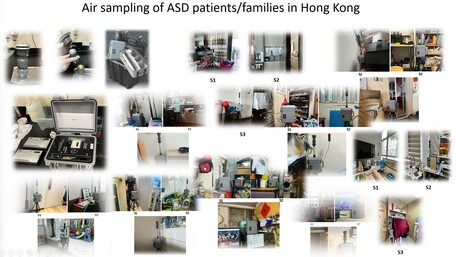Environmental Toxicology
Air pollution as a potential cause of autism
Research in the last decade has shown that exposure to air pollution such as ambient particulate matter (PM) is a possible risk factor for the occurrence of Autism Spectrum Disorders (ASD). The description of the neurotoxicity mechanisms and the impact of prenatal and early childhood exposure to ambient PM on the risk of ASD in children so far remains inconclusive in existing literature. This project’s primary goal is to identify the ASD-causing toxic compositions in PM, which contains different potentially neurotoxic substances causing ASD, through stimulation tests, cell tests and mouse model experiments. Its results reveal and verify the environmental factors, i.e. exposure to developmental neurotoxicants, e.g. ambient particulate matters through respiration (not only from dietary intake via food and water) that contribute to the occurrence of ASD.
Sustainable Development Goals
In 2015, UN member states agreed to 17 global Sustainable Development Goals (SDGs) to end poverty, protect the planet and ensure prosperity for all. The research team contributes towards the following SDG(s):
While the exact cause of ASD remains unknown, possible risk factors include family-related factors (e.g., genetic factors or parental age) and environmental factors (Giovanni, 2021). Recent studies show that exposure to air pollution, particularly ambient PM, is associated with neurobehavioral dysfunction and ASD among children. PM refers to a mixture of solid particles and liquid droplets in the air, rather than a single substance. The current project aims to identify the chemical substances positively correlated with the occurrence of ASD, study the mechanisms of neurotoxicity, and evaluate the health risks posed by identified toxic compositions in PM2.5 through field sampling, chemical analysis, stimulation tests, cell tests, and mouse model experiments.
Numerous studies link ASD and PM, but there are few descriptions of the mechanisms of neurotoxicity caused by PM in children. This project takes a novel approach by using known sizes and concentrations of standard PM samples and potential chemicals as a stimulation method to identify ASD-causing toxic substances via cell tests and mouse model experiments. It will verify environmental factors, particularly exposure to developmental neurotoxicants, such as ambient particulate matter through respiration, which may contribute to the occurrence of ASD, beyond dietary intake from food and water.
The World Health Organization estimates that 1 in 160 children globally had ASD as of 2021. Families of children with ASD may incur annual costs that range from US$20,000 to $60,000, with lifetime costs for an individual with ASD estimated to be between $1.4 million and $2.4 million. These costs include direct expenses (medical care, therapy, special education) and indirect costs (lost productivity, caregiver costs), a significant economic burden. In addressing critical health issues arising from the identified ASD-causing toxic compositions in PM, this study provides valuable references for policymakers to review current air quality monitoring schemes, ultimately improving public health by reducing exposure to ASD-causing toxic substances in PM.







